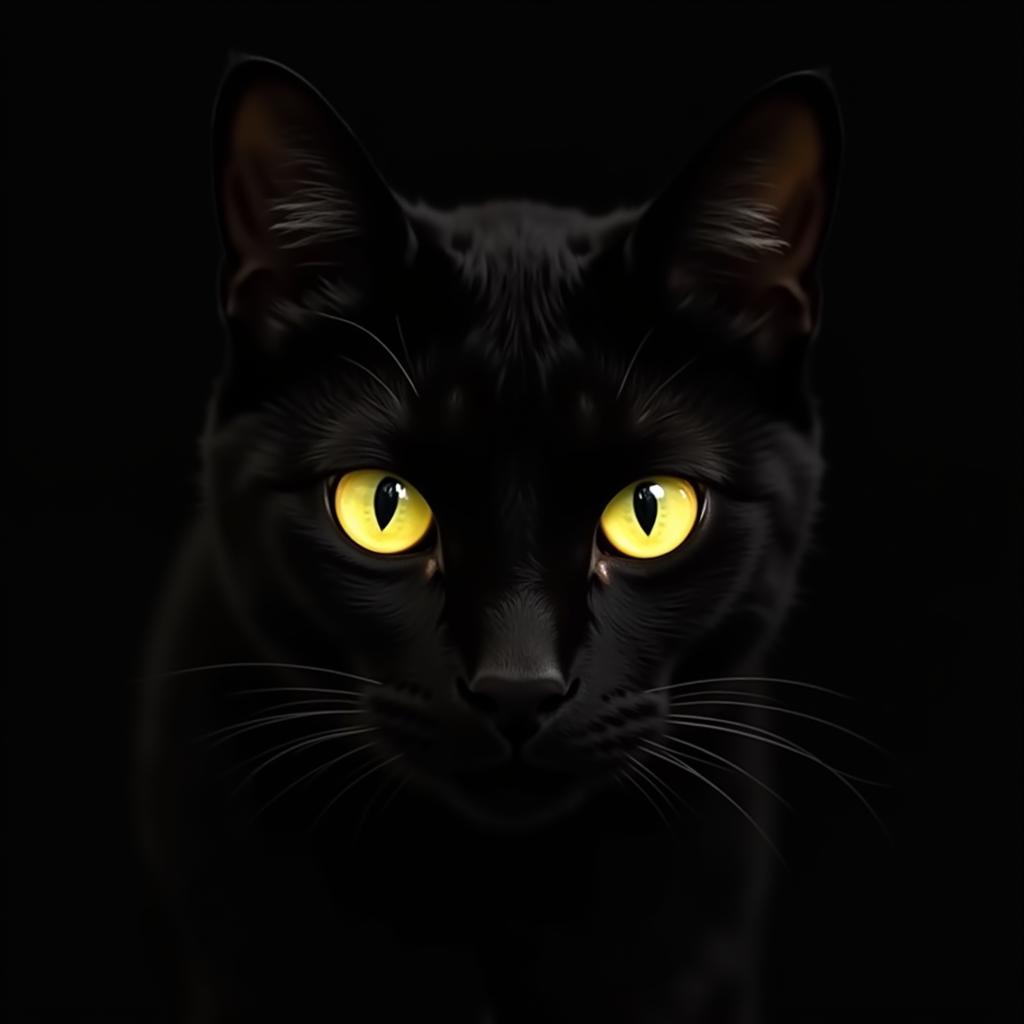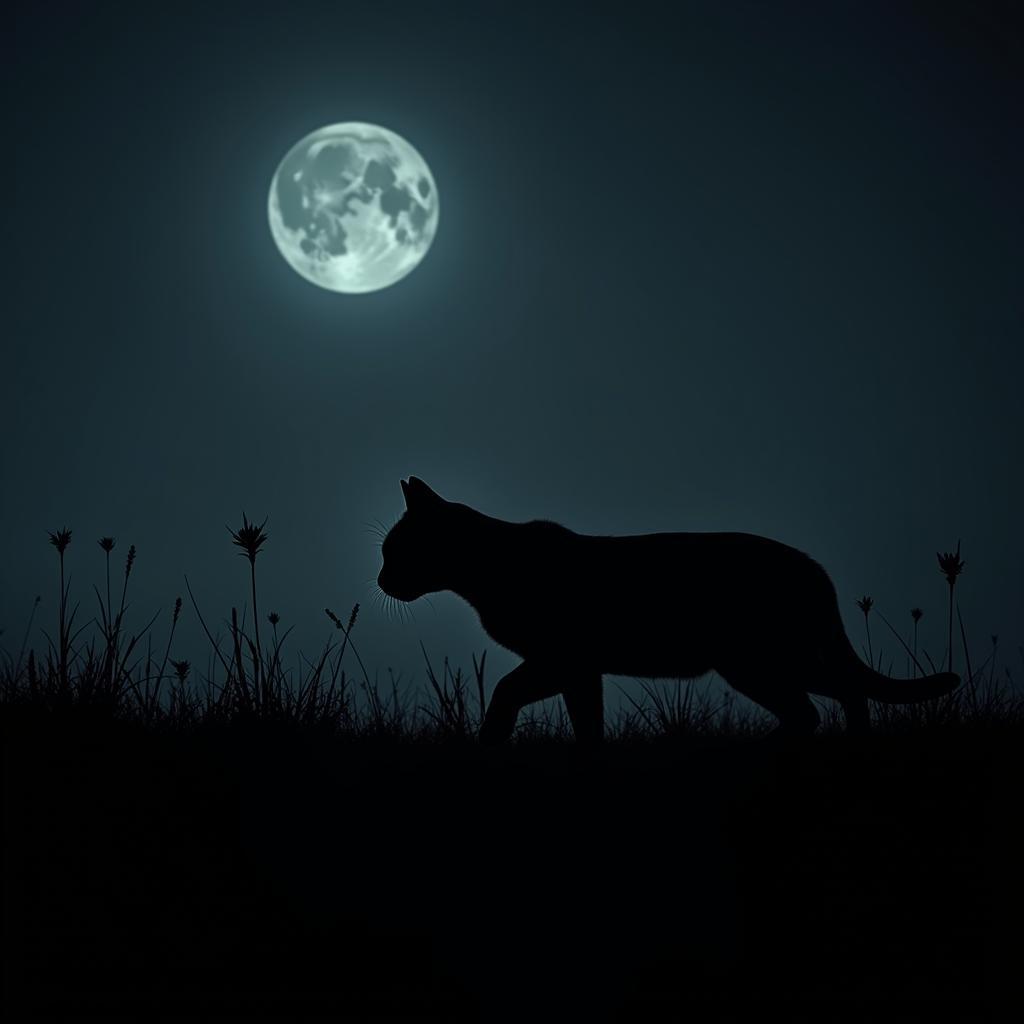We’ve all heard the saying “curiosity killed the cat,” but did you know that a cat’s exceptional night vision is part of what makes them such skilled hunters? While they may not see in complete darkness, cats can see remarkably well in low-light conditions, far exceeding our own abilities. This leads to the intriguing question: what colors do cats see in the dark?
Dispelling the Myth of Total Darkness
Contrary to popular belief, cats cannot see in complete darkness. Like all mammals, they need at least a small amount of light for their eyes to function. However, cats possess a special advantage over humans when it comes to navigating dim environments.
 Cat's Eyes with Night Vision
Cat's Eyes with Night Vision
The Science Behind Feline Night Vision
Cats have evolved several physiological features that enhance their vision in low light:
- Elliptical Pupils: Unlike our round pupils, cats have vertically-slit pupils that can open much wider, allowing them to control the amount of light entering their eyes with precision. This is especially beneficial in low-light conditions where every photon counts.
- Tapetum Lucidum: This reflective layer situated behind a cat’s retina acts like a mirror, reflecting light that passes through the retina back onto it for a second chance to be absorbed by photoreceptor cells. This essentially amplifies the available light, further boosting their night vision.
- Rod-Dominant Retina: The retina, the light-sensitive tissue at the back of the eye, is composed of two types of photoreceptor cells: rods and cones. Rods are responsible for detecting light and motion, while cones perceive color. Cats have a higher proportion of rods in their retinas compared to humans, making them extremely sensitive to even the slightest movements in low light.
So, What About Colors?
While cats excel at seeing in low light, their color vision is not as vibrant as ours. Let’s delve into the world of feline color perception:
Dichromatic Vision: Seeing the World Differently
Humans have trichromatic vision, meaning we possess three types of cone cells that allow us to see a wide spectrum of colors. Cats, on the other hand, have dichromatic vision, meaning they have two types of cones. This limits their color perception, making their vision similar to that of a human with red-green color blindness.
A World of Blues, Greens, and Yellows
Instead of seeing the world in a full spectrum of colors, cats primarily perceive blues, greens, and yellows. They may also be able to distinguish between shades of gray, similar to how we see different shades of a single color.
Navigating the Night: More Than Just Color
While cats may not see a kaleidoscope of colors in the dark, their superior night vision allows them to effectively hunt, navigate, and explore their surroundings. Their ability to detect subtle movements and changes in light intensity is far more crucial for their survival than discerning a wide range of colors.
 Cat Hunting at Night
Cat Hunting at Night
FAQs About Cat Vision
Q: Can cats see in total darkness?
A: No, cats cannot see in complete darkness. They require at least a small amount of light for their eyes to function.
Q: Do cats see better than humans in the dark?
A: Yes, cats have superior night vision compared to humans due to their specialized eye anatomy and a higher proportion of rod cells in their retinas.
Q: What colors are cats most attracted to?
A: While more research is needed, some studies suggest cats may be particularly drawn to blue and green hues.
Need More Information on Your Feline Friend’s Senses?
If you’re curious to learn more about how your cat perceives the world, check out these articles:
Unveiling the Wonders of Feline Vision
Understanding how cats see in the dark provides a glimpse into the fascinating world of animal senses. While their color perception may be limited, their exceptional night vision is a testament to their evolutionary adaptation as skilled hunters and nocturnal explorers. So, the next time you see your cat’s eyes gleaming in the dark, remember that they are experiencing a world of subtle movements and contrasts, proving that color isn’t everything when it comes to navigating the night.
For all your color needs and to learn more about how color influences our world, contact us at:
Phone Number: 0373298888
Email: [email protected]
Address: 86 Cầu Giấy, Hà Nội.
Our customer service team is available 24/7 to assist you.

